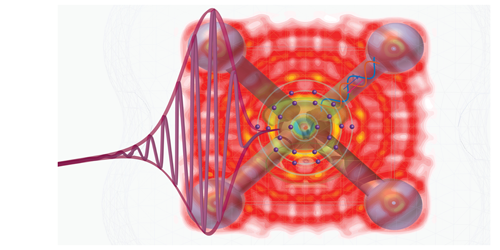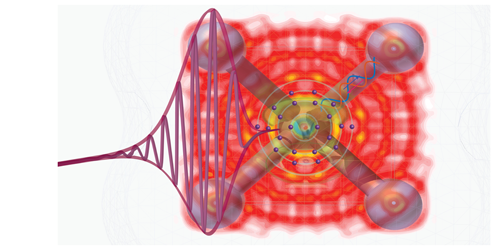X-Ray Absorption Spectroscopy on a Tabletop
X-ray absorption spectroscopy (XAS) is a versatile tool for chemistry, biology, and materials science. By probing how x rays are absorbed from core electrons of atoms in a sample, the technique can reveal the local structure around selected atoms. XAS measurements are typically performed using the well-controlled x-ray beams of large-scale synchrotron facilities. A new study, however, shows that a tabletop x-ray source driven by lasers can be used to acquire XAS spectra as accurate as those obtained at synchrotrons. The scheme could dramatically expand the availability of XAS.
The setup used by Dimitar Popmintchev of JILA and the University of Colorado, both in Boulder, and his co-workers generates x rays through high-harmonic generation (HHG), in which an infrared laser beam focused on a gas sample creates radiation at much higher frequencies. Previously demonstrated HHG sources haven’t been sufficiently bright at the frequencies needed for most XAS work. But the authors recently developed a source that emits attosecond pulses in a laser-like beam with record brightness at photon energies ranging from 100 to 1600 eV.
With this source, the team demonstrated various types of XAS. They showed that the setup can probe the frequency range containing the resonances of many elements relevant to biochemical and condensed-matter studies; as examples, they acquired accurate spectra for carbon, scandium, and iron. They also measured absorption over a broad frequency range in the “water window,” which is important for probing biological specimens, since water is transparent at these frequencies but carbon isn’t. What’s more, the source’s short pulses could be used in the future to carry out time-resolved XAS experiments that probe ultrafast processes in materials and biomolecules.
This research is published in Physical Review Letters.
–Matteo Rini
Matteo Rini is the Deputy Editor of Physics.





